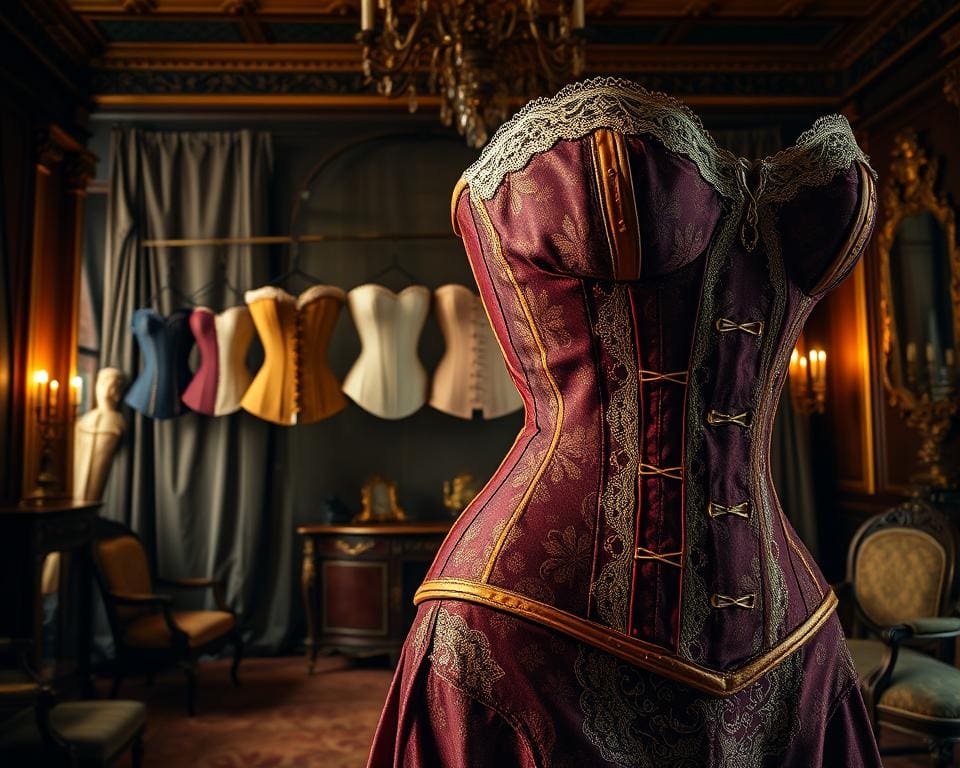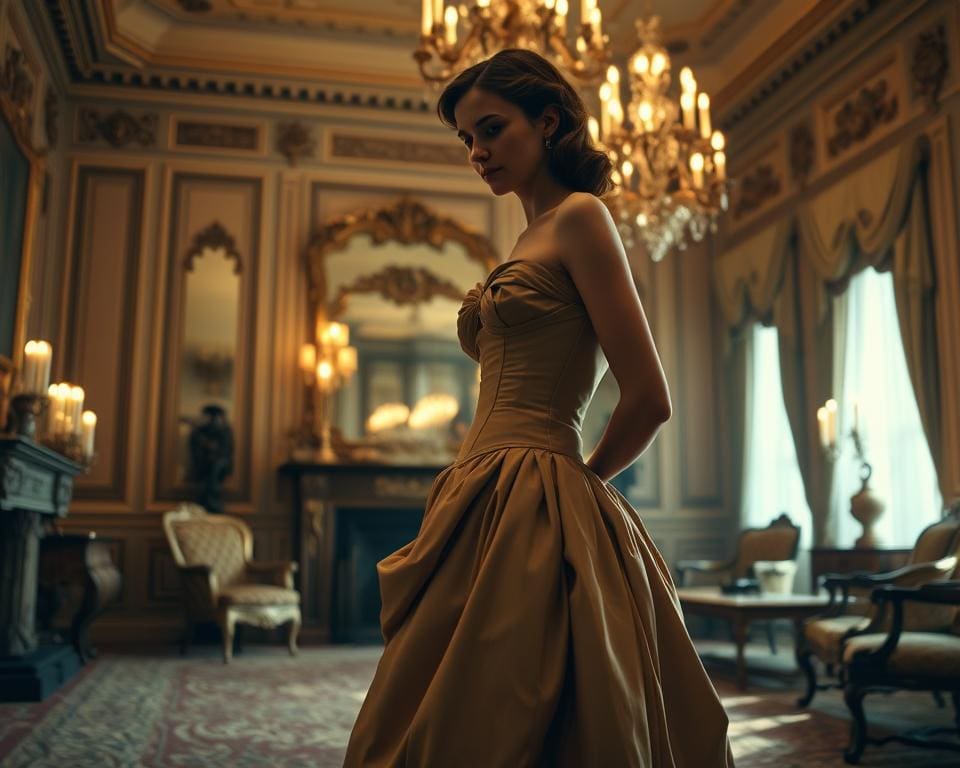The journey of corsets in women’s fashion is both fascinating and complex, raising the essential question: when did corsets go out of fashion? Historically, these garments played a pivotal role in shaping women’s silhouettes, embodying the elegance and constraints of various eras. Understanding their decline unveils a multitude of social, cultural, and fashion-related shifts that contributed to their transition from a wardrobe staple to a historical curiosity. This exploration of corsets fashion history not only highlights the changes in women’s wear but also reflects broader historical fashion trends that have continually redefined femininity through time.
History of Corsets
The history of corsets reveals a fascinating journey through fashion, beginning in the 16th century. Initially designed as supportive garments, corsets served to shape and define women’s figures, reflecting the cultural ideals of beauty and modesty prevalent at the time. These undergarments, crafted from various materials, became essential items in women’s wardrobes, with their design evolving alongside trends and societal norms.
Origins of the Corset
Traditionally, the earliest corsets were simple, utilitarian garments. They were crafted from materials like linen or cotton, often reinforced with whalebone or even wood for added support. This early version focused primarily on providing structure rather than aesthetics. The evolution of Corsets Fashion History saw these garments transforming into intricate pieces that featured elaborate decorations and were made from luxurious fabrics, responding to the ever-changing demands of fashion.
The Corset through the Ages
As historical fashion trends progressed, corsets underwent significant transformations. In the 18th century, styles began to shift, leading to the introduction of the infamous stays, which created an exaggerated hourglass shape. The Industrial Revolution brought about mass production of corsets, making them accessible to a broader audience. By the Victorian era, corsets had become synonymous with femininity, influencing social norms and expectations surrounding women’s bodies.
In the 20th century, the perception of corsets changed dramatically. The advent of new materials and the rise of feminist movements sparked debates about the role of these garments in women’s lives. Today, while corsets are no longer a daily necessity, they continue to influence modern fashion, particularly through vintage-inspired designs and contemporary reinterpretations.

Victorian Era Fashion
The Victorian Era serves as a fascinating lens through which to explore fashion and societal norms. Central to this period was the corset, an elaborate garment that became synonymous with the ideals of femininity and social standing. The significance of corsets during this era became evident as women adhered to constrictive styles that shaped the silhouette, reflecting the cultural values and expectations of the time.
Significance of Corsets in the Victorian Era
The corset represented much more than mere clothing; it functioned as an emblem of status, virtue, and beauty. Women meticulously crafted their appearance by emphasising a narrow waist, achieved through the practice of tight lacing. This ideal not only defined the female form but also highlighted the social hierarchy, as the ability to afford such garments directly correlated with wealth and class. Fashion in the Victorian Era was a significant means of expressing individuality and societal roles.
Shifts in Body Ideals
As the Victorian Era progressed, body ideals began to shift, signalling a move towards more realistic and relaxed standards. The late 19th century witnessed growing sentiments surrounding women’s health and the constraints placed upon their bodies. Emerging suffragette movements and more progressive attitudes led to a re-evaluation of beauty, allowing women to embrace a fuller figure. This transformation in body ideals paved the way for the evolution of women’s fashion, setting the stage for future trends in the 20th century.
When Did Corsets Go Out Of Fashion
The early 20th century marked a significant turning point in women’s fashion, particularly regarding the decline of corsets. The suffragette movement played a crucial role in this cultural shift, as women began to reject the constraints that corsets imposed on both their bodies and their freedoms. As World War I unfolded, practicality took precedence over aesthetics. War-time activities required attire that allowed for greater mobility, leading to a noticeable departure from traditional Historical Fashion Trends.
Progressive designers, such as Coco Chanel and Paul Poiret, championed a new sense of comfort, favouring more natural silhouettes that liberated women from the rigid structures of corsetry. Such innovations began to dominate the scene, as women sought clothing that mirrored their evolving roles in society. The growing embrace of freedom and individuality further contributed to the question of When Did Corsets Go Out Of Fashion, as the appetite for restrictive garments waned.
With each passing decade, the prevalence of corsets diminished, paving the way for styles that celebrated the body rather than constrained it. By the 1920s, the iconic flapper dress epitomised this revolution, incorporating looser fits and more relaxed lines. Women no longer desired the exaggerated curves that corsets provided, opting instead for comfort and ease, further illustrating a broader departure from Historical Fashion Trends of the past.
Feminine Clothing Trends in the 20th Century
The period following World War I marked a pivotal transformation in women’s fashion as numerous shifts emerged, reflecting changes in society and women’s roles. An assessment of Feminine Clothing Trends during this time reveals how practicality began to overshadow the restrictive designs of Women’s Wear in the Past. As societal norms began to evolve, traditional garments adapted to reflect new ideals.
Changes in Women’s Wear Post-World War I
After the war, women stepped into roles that demanded greater freedom and functionality in their attire. The cumbersome corset gave way to more relaxed silhouettes, allowing for ease of movement and self-expression. Dresses became shorter, and the flapper style emerged, characterised by dropped waists and light fabrics. This shift symbolised not just a change in aesthetics but a statement of liberation as women sought comfort while challenging social conventions.
The Rise of Feminine Liberation and Its Impact on Fashion
The fashion of the 1920s intertwined closely with the feminist movements of the time. Women started to reclaim their identities, moving away from the restrictions imposed by society and embracing new styles that celebrated their autonomy. Designers like Coco Chanel played a significant role in promoting a more androgynous look, which abandoned traditional femininity for a more modern approach. This evolution in Women’s Wear in the Past laid the groundwork for future generations, reinforcing the importance of comfort and individuality in Feminine Clothing Trends.
Women’s Clothing Evolution
The journey of women’s clothing evolution is a remarkable tale that marks a significant turn from the constraints of corsets to a world where comfort meets style. As society began to recognise the importance of functionality, designers embraced the challenge of creating garments that cater to various aspects of a woman’s life, all without compromising aesthetic appeal.
From Practicality to Fashion
In earlier eras, clothing often prioritised form over function, leading to a complicated wardrobe largely dictated by societal norms. This approach limited women by forcing them into uncomfortable silhouettes. The shift marked by the departure from corsets led directly to a transformation that emphasised practicality. Fabrics became softer, cuts looser, and the shapes began to reflect the dynamic roles women were undertaking. This period saw a rise in feminine clothing trends such as shifts and wrap dresses that allowed for movement and self-expression.
Transition to Modern Silhouettes
Today, the evolution of women’s clothing has leapt forward with the introduction of modern silhouettes featuring an array of designs that showcase comfort and diversity. Designers have adopted inclusive practices by integrating various sizes and styles, appreciating every figure as a canvas for art. This transition to modern silhouettes has embraced elements that celebrate the female form, steering clear of restrictive fashions of the past. As a result, women can now express their individuality through an impressive range of attire that still embodies elegance and femininity.
Fashion Trends Timeline
The journey of women’s fashion is marked by significant milestones that reveal a fascinating interplay between cultural attitudes and sartorial choices. Starting with the introduction of the corset in the late 16th century, this historical garment became emblematic of femininity, shaping women’s silhouettes for centuries. As we trace this Fashion Trends Timeline, it becomes evident that the corset’s popularity was intertwined with societal norms and expectations surrounding femininity and beauty.
Moving into the Victorian era, corsets were not merely clothing but symbols of status and identity. However, the early 20th century heralded a revolution in women’s wear, spurred by socio-political movements advocating for female liberation. The timeline reflects key shifts, such as the flapper style of the 1920s, which emphasised comfort and freedom over constricting garments, signalling a dramatic departure from the corsets fashion history that had defined women’s wear for so long.
The evolution of women’s clothing continued throughout the decades, with each era contributing to the intricate tapestry of fashion trends. Technological advancements in textile manufacturing and changing aesthetics have further allowed for diverse expressions of feminine identity. By exploring this Fashion Trends Timeline, readers can appreciate how historical fashion trends paved the way for contemporary styles, highlighting an ongoing dialogue between society and the evolving perception of women’s bodies.









